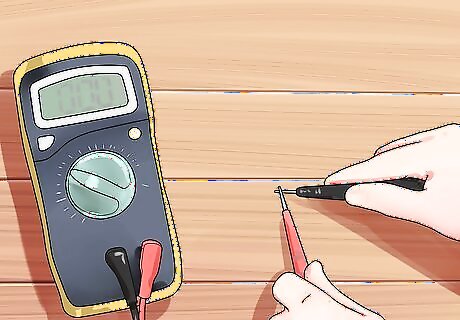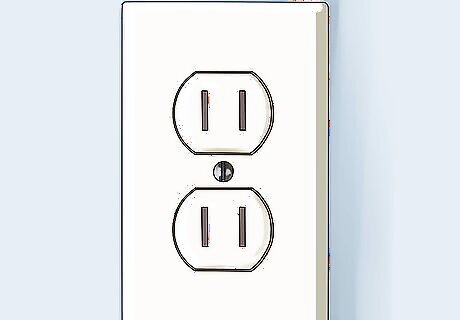
views
Turning Off the Electricity to the Outlet

Turn off the switch powering the appropriate outlets. At the home’s electrical box, find the switch powering the outlet(s) with which you’ll be working and turn it off. Use caution since some kitchens may have two separate switches powering the space.

Test the current to a live outlet. Use a current tester to check an outlet that you know still has power running to it. This allows you to check your tester to ensure that it’s in proper working order before trying it on the inactive outlet.

Test the inactive outlet(s). Now that you know your tester is working, try it against the inactive outlet(s) to ensure that they have indeed been powered down.
Extending the Outlet

Remove the cover from the electrical outlet. The cover can be removed by loosening the screws securing it to the outlet. There will either be one screw in the center, or two screws on the top and bottom of the outlet cover. Place the outlet cover and the screws aside.

Unscrew the outlet from the electrical box. There will be two long mounting screws securing the electrical outlet to the blue electrical box. Remove them so you can insert the outlet extenders.

Insert outlet extenders to a sufficient depth for your tile. Since the tile adds additional depth from the wall, the original outlet location will be sunken back from the tile surface. You can use either accordion-style or box-style outlet spacers to raise the outlet flush with the tile. The accordion design spacers fold over with 1/8” added for each segment. If the depth of your new tile is 5/8” thick, then you can add five segments to raise the outlet 5/8”. An outlet box extender is a rectangular ring that fits over and behind the outlet to add additional space between the original outlet box and the outlet.

Reattach the outlet loosely with the spacers in place. Regardless of which type of extender you use, the design has a hole, so you can feed the mounting screw through the extender and back into the outlet box. You won’t tighten it down until after you place your tile. This will also allow you to test if your current screws are long enough to reattach the outlet with the extender in place. You may have to purchase longer screws.
Cutting the Tiles to Size

Measure the cut you need to make. Depending on the size and placement of your tile up to the outlet, you’ll likely need to make either an L-shaped cut from the corners of four tiles or a U-shaped cut closer to the centers of two. By attaching the outlet faceplate, you can easily measure the distance between the next closest tile(s) for the length and width up to the faceplate. Since the cut tile needs the faceplate to overlap it, add roughly an additional 1/4” to the measurement—enough so that the tile reaches under the faceplate but not so much that the tile runs into the outlet or mounting screws.

Mark those measurements on the tile(s) you need to cut. Since you obviously can’t fit the uncut tile into the space to trace the measurement, you’ll have to copy the measurement onto the tile before cutting. Remember—measure twice, cut once.

Cut the tiles to size. Using either a tile cutter or wet tile saw, cut the tiles along the measurements you have marked. Do not attempt to cut the tiles using a snap tile cutter, as this tool cannot make partial cuts. If you haven’t had to cut any tile for the project yet, then you can read Cut Tile for steps how.

Trim the tiles to fit around the screws. After cutting the tiles to fit underneath the faceplate of the electrical outlet, you may still need to cut a small piece away to fit around the screws securing the outlet to the electrical box. Mark the area that needs to be trimmed with a pencil, and use your tile snips to clear away enough material to accommodate each screw.
Installing the Tile around the Outlet

Install the tiles around the outlet. Apply tile mastic or quick-set mortar to the area around the outlet, being careful not to get any into the electrical box. Push the cut tiles firmly into place. Use appropriately sized tile spacers to keep consistent space between the tiles as they set.

Apply grout between the joints. You have to finish grouting the space between the tiles before you can tighten down the electrical outlet in the box.

Tighten down the electrical outlet. You may have to hold the outlet in place as you tighten to stop it from twisting and misaligning with the faceplate.

Replace the electrical outlet cover. Once the tiles are installed and grouted, replace the outlet cover. The outlet cover should hide all the cut edges of your tiles.














Comments
0 comment